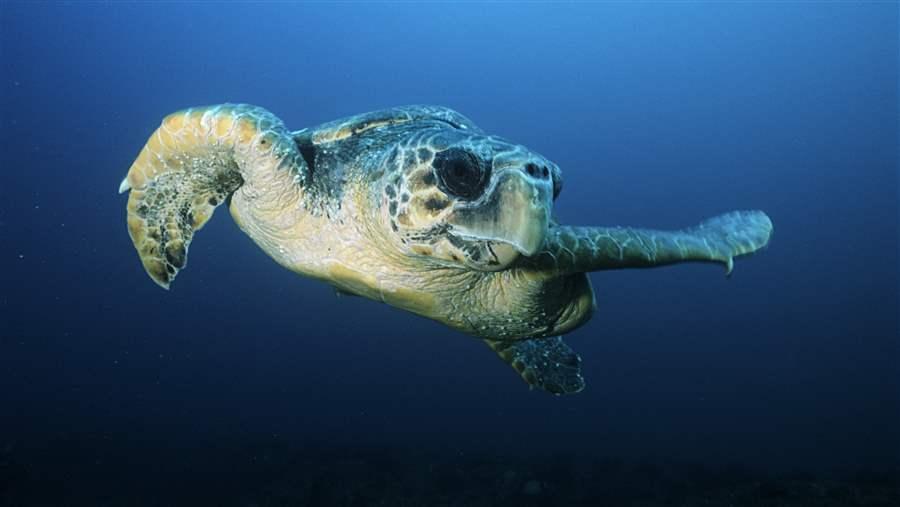High Seas Protections Must Cover Critical Role of Ecosystems
New study also sheds light on defining ocean habitats

According to new science, highly migratory species such as the loggerhead sea turtle would be considered safeguarded within a high seas marine protected area.
© ShutterstockThe science is clear: The ocean is suffering from a suite of human-caused impacts, and action is needed soon to reverse that decline and ensure the protection of marine biodiversity in areas that have yet to be exploited.
While the United Nations has called for 10 percent of marine and coastal areas to be conserved in protected areas or fully protected reserves by 2020, it’s become clear that isn’t enough. Some scientists have suggested that at least 30 percent of our seas should be set aside to sufficiently protect the ecosystems and habitats that make up a healthy ocean. While many nations have declared marine protected areas within their national waters, there is no mechanism to create these MPAs on the high seas, the areas beyond national jurisdiction that make up roughly 60 percent of the world’s ocean.
Fortunately, protecting the high seas is near the top of the agenda of upcoming U.N. General Assembly meetings this fall where countries will decide on launching an intergovernmental conference to negotiate an international treaty that would create a legal mechanism to establish MPAs on the high seas.
As that process advances, it is critical to know what makes up a high seas habitat and how to define what is protected within an ocean region without obvious borders. A paper published today in Frontiers in Marine Science does just that and emphasizes why this definition is critical when establishing high seas MPAs.
Co-authors Bethan O’Leary and Callum Roberts of the University of York in the U.K. argue that all ocean habitats should include all species that live in or would naturally migrate through those waters. (Roberts is also a Pew marine fellow.) For example, if a stretch of ocean is home to or used by plankton, sea turtles, reef fish, and highly migratory sharks and whales, an MPA should ensure that all of the species within it are protected—even those that don’t live there permanently—because each contributes to the functioning ecosystem.
Most governments use a very similar definition when establishing fully protected areas, such as national parks, on land. This definition also provides an easy outline for governments and scientists to propose MPAs on the high seas. It also means that in certain places—such as the “White Shark Cafe,” which is halfway between the Baja California peninsula in Mexico, and Hawaii in the Pacific Ocean, or well-known sea turtle habitats like the Sargasso Sea—high seas protections should be designed to include more than just the iconic, recognizable species.
This paper is timely, coming both before the General Assembly makes its decision and as the 4th International Marine Protected Areas Congress (IMPAC4) gathers in Chile on Sept. 4-8. The conference is a key opportunity for governments, nongovernmental organizations, and scientists to discuss MPA development and the intricate connections between people and oceans. I am privileged to be speaking about the importance of high seas MPAs on a panel at IMPAC4 with some leading experts and look forward to working with attendees there to advance these critical protections.
IMPAC4 and this new science come at a key moment for the ocean, as MPAs gain greater prominence, particularly in the international community. As the General Assembly gears up to move forward on high seas MPAs, fully understanding what’s at stake and why all life in an ocean region should be protected greatly increase the chances of crafting and implementing a successful treaty.
Liz Karan directs The Pew Charitable Trusts’ work to protect ocean life on the high seas.












